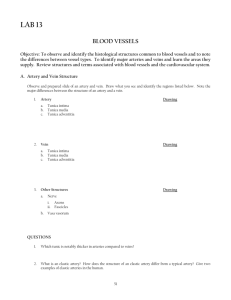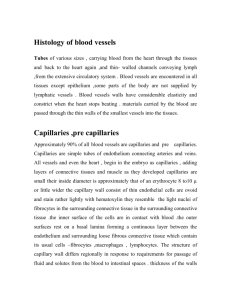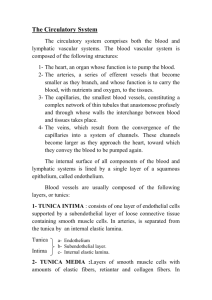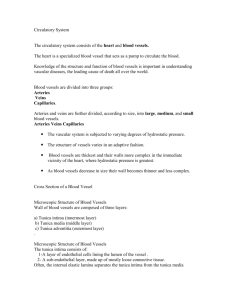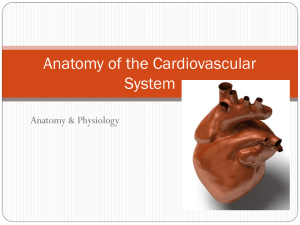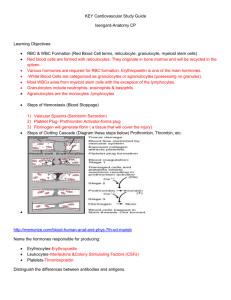Anatomy of an Artery – Structure and Layers of the Arterial Wall
advertisement
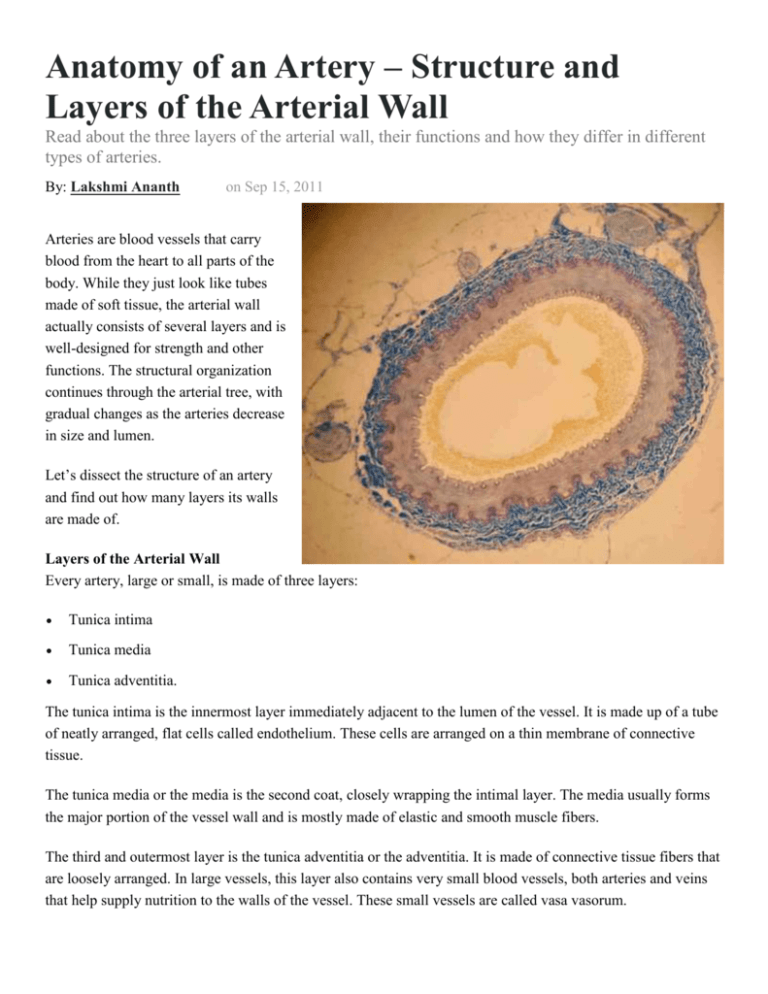
Anatomy of an Artery – Structure and Layers of the Arterial Wall Read about the three layers of the arterial wall, their functions and how they differ in different types of arteries. By: Lakshmi Ananth on Sep 15, 2011 Arteries are blood vessels that carry blood from the heart to all parts of the body. While they just look like tubes made of soft tissue, the arterial wall actually consists of several layers and is well-designed for strength and other functions. The structural organization continues through the arterial tree, with gradual changes as the arteries decrease in size and lumen. Let’s dissect the structure of an artery and find out how many layers its walls are made of. Layers of the Arterial Wall Every artery, large or small, is made of three layers: Tunica intima Tunica media Tunica adventitia. The tunica intima is the innermost layer immediately adjacent to the lumen of the vessel. It is made up of a tube of neatly arranged, flat cells called endothelium. These cells are arranged on a thin membrane of connective tissue. The tunica media or the media is the second coat, closely wrapping the intimal layer. The media usually forms the major portion of the vessel wall and is mostly made of elastic and smooth muscle fibers. The third and outermost layer is the tunica adventitia or the adventitia. It is made of connective tissue fibers that are loosely arranged. In large vessels, this layer also contains very small blood vessels, both arteries and veins that help supply nutrition to the walls of the vessel. These small vessels are called vasa vasorum. Why Does the Artery Wall Have Layers? Every layer of the arterial wall has its function. The intima, for instance, has a smooth surface that blood easily flows along. The tunica media has two components – elastic fibers and smooth muscle, both of which have important functions. Elastic fibers help the vessel stretch and recoil – stretch and expand when the heart contracts and pumps blood into the arterial system and recoil when the heart relaxes. Contraction of smooth muscle fibers in the media causes the artery to shrink. This reduces or even stops blood flow in the vessel and is called vasoconstriction, an important feature in preventing bleeding. On the other hand, relaxation of the smooth muscle causes vasodilatation where the artery expands, increasing the blood flow. Together, vasoconstriction and vasodilatation also help regulate blood pressure. Smooth muscles are involuntary and are controlled by the sympathetic part of the autonomic nervous system. Connective tissue in the adventitia forms a protective coat over the other arterial layers and also helps attach the vessel to surrounding structures like muscles. Types of Arteries Arteries nearer the heart are all elastic arteries. These are large blood vessels dealing with a large amount of blood flow through them. They also have to stretch and recoil with the contraction and relaxation of the heart. These vessels have plenty of elastic fibers in their tunica media and are called elastic arteries. Muscular arteries are smaller in size. They have more smooth muscle than elastic fibers in their tunica media that helps them to constrict and relax. Arterioles are the smallest arteries and are barely visible to the naked eye. Even these vessels have three layers in their walls, although their tunica media is not very bulky and consists only of smooth muscle. Arterioles gradually empty into capillaries. Learning the anatomy of an artery helps understand arterial diseases like atherosclerosis. The three layers of the arterial wall, the tunica intima, media and adventitia, are designed to help arteries carry out their functions like transport of blood and regulation of blood pressure. Sources: Mader, Sylvia S., Understanding Human Anatomy and Physiology. (McGraw Hill, 5th edition, 2004) Guyton A.C. and Hall J.E., Textbook of Medical Physiology. (Elsevier, 10th edition, 2004) Copyright Lakshmi Ananth Read more at Suite101: Anatomy of an Artery – Structure and Layers of the Arterial Wall | Suite101 http://suite101.com/article/anatomy-of-an-artery--structure-and-layers-of-the-arterial-wall-a388910#ixzz2HOdF7cj5 Follow us: @suite101 on Twitter | Suite101 on Facebook
